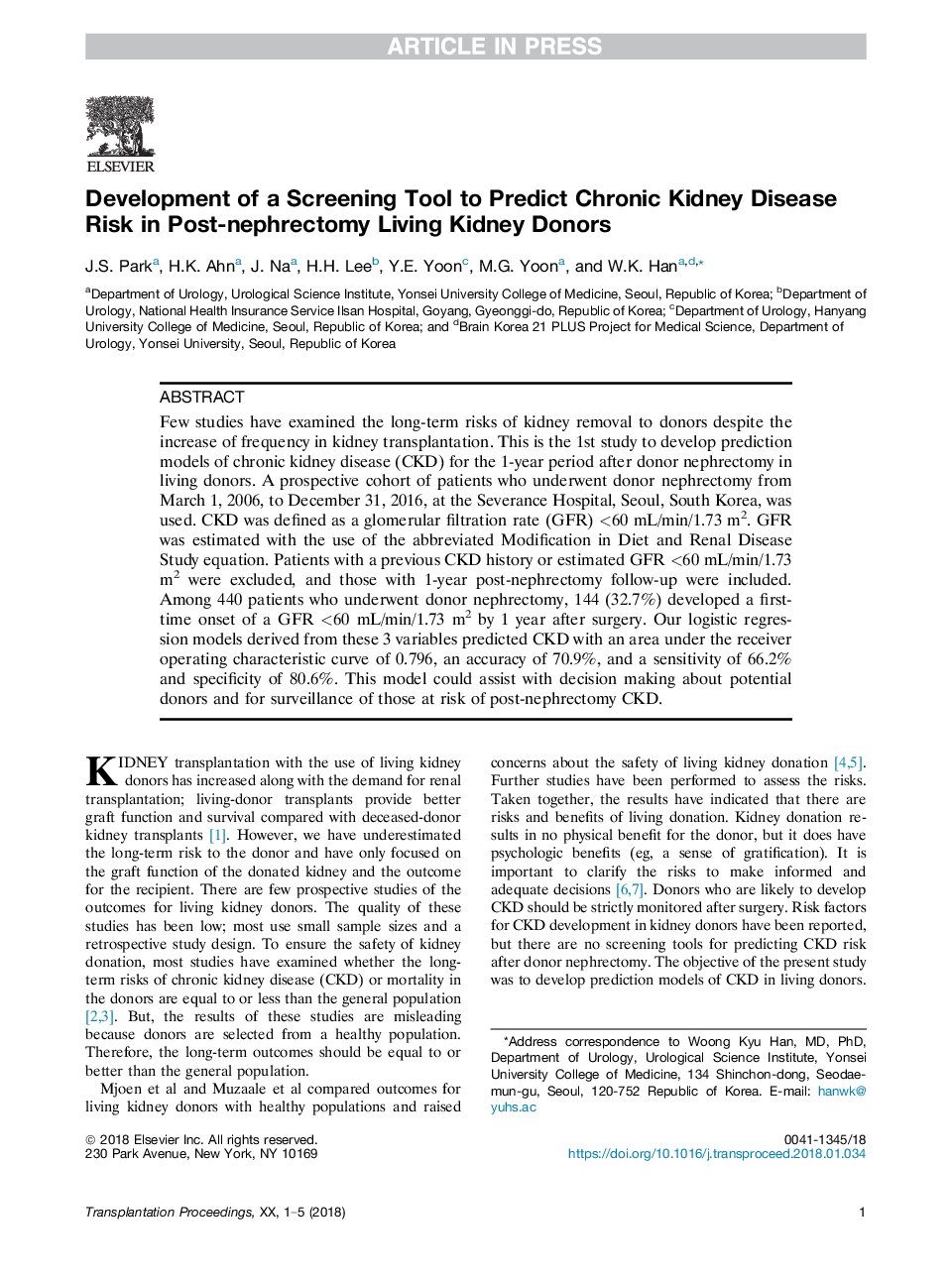| Article ID | Journal | Published Year | Pages | File Type |
|---|---|---|---|---|
| 8827094 | Transplantation Proceedings | 2018 | 5 Pages |
Abstract
Few studies have examined the long-term risks of kidney removal to donors despite the increase of frequency in kidney transplantation. This is the 1st study to develop prediction models of chronic kidney disease (CKD) for the 1-year period after donor nephrectomy in living donors. A prospective cohort of patients who underwent donor nephrectomy from March 1, 2006, to December 31, 2016, at the Severance Hospital, Seoul, South Korea, was used. CKD was defined as a glomerular filtration rate (GFR)Â <60 mL/min/1.73 m2. GFR was estimated with the use of the abbreviated Modification in Diet and Renal Disease Study equation. Patients with a previous CKD history or estimated GFRÂ <60 mL/min/1.73 m2 were excluded, and those with 1-year post-nephrectomy follow-up were included. Among 440 patients who underwent donor nephrectomy, 144 (32.7%) developed a first-time onset of a GFRÂ <60 mL/min/1.73 m2 by 1 year after surgery. Our logistic regression models derived from these 3 variables predicted CKD with an area under the receiver operating characteristic curve of 0.796, an accuracy of 70.9%, and a sensitivity of 66.2% and specificity of 80.6%. This model could assist with decision making about potential donors and for surveillance of those at risk of post-nephrectomy CKD.
Related Topics
Health Sciences
Medicine and Dentistry
Surgery
Authors
J.S. Park, H.K. Ahn, J. Na, H.H. Lee, Y.E. Yoon, M.G. Yoon, W.K. Han,
